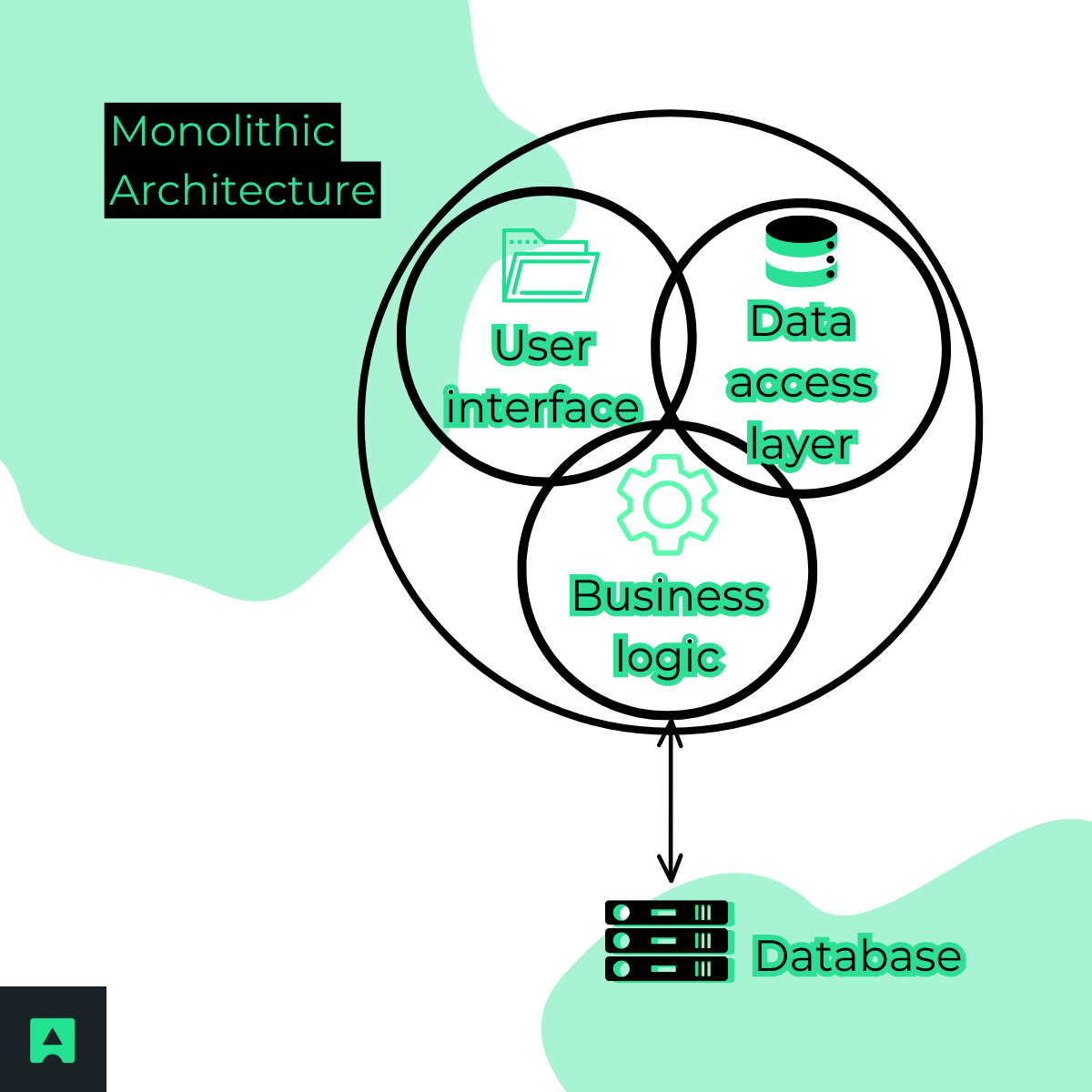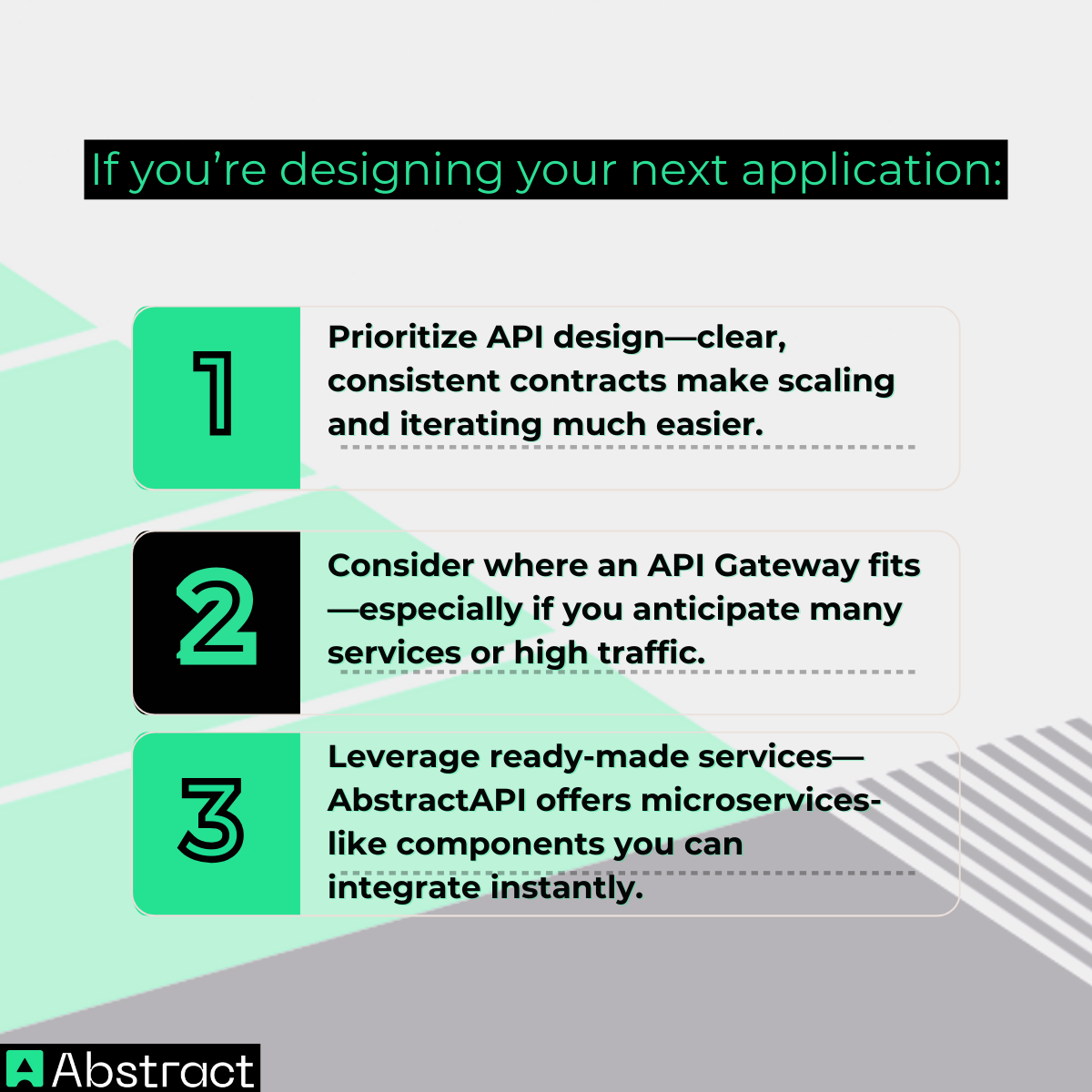Defining the Core Concepts 🔍
What is an API? — The Contract 📜
An API (Application Programming Interface) is essentially an agreement: a structured set of rules, endpoints, and protocols that define how one piece of software can interact with another.
Think of it like a coffee shop menu ☕.
- It lists what’s available (operations you can perform).
- It specifies what’s needed from you (input, like payment or order details).
- It tells you what you’ll receive (the output, such as a latte or a cappuccino).
You don’t have to step behind the counter or understand how the espresso machine works. You just follow the “contract” of the menu, and the barista delivers.
What is a Microservice? — The Specialized Engine ⚙️
A microservice is a small, autonomous piece of a larger application, designed to perform a single function exceptionally well. In a microservices architecture, many of these independent services work together to form the complete system.
Picture a factory floor 🏭: one station is dedicated to cutting metal, another to painting, and another to quality inspection. Each station (microservice) is self-sufficient, has its own staff, tools, and processes, and can operate independently—yet they all contribute to producing the final product.
The Real Relationship: It’s Not “Vs.”, It’s “And” 🔗
Here’s the big “Aha!” moment:
Microservices rely on APIs to talk to each other.
In a monolithic application, all parts of the program are housed in one codebase, sharing the same memory and resources. In a microservices setup, each service lives on its own—possibly even on separate servers or in different programming languages—so they need a well-defined way to exchange data.
That’s where APIs come in.


- Analogy: Imagine our dessert station in the factory-style kitchen 🍰. The pastry chef doesn’t shout to the cashier when a payment comes through. Instead, a central ordering system (API) sends a clear, structured message: “Order #123 has been paid—start preparing the cheesecake.” The message format never changes, so both sender and receiver know exactly what to expect.
The Role of the API Gateway 🚪
As your application evolves and the number of microservices multiplies, direct communication between clients (like web browsers, mobile apps, or third-party systems) and each individual service quickly becomes unmanageable. This is where the API Gateway steps in as an essential architectural component.
The API Gateway serves as a unified entry point for all incoming requests from external clients. Instead of exposing dozens—or even hundreds—of microservice endpoints to the outside world, you present a single, consistent interface. The gateway then decides how to route each request internally.
Why it matters:
- Simplified Client Logic: Clients only need to know one endpoint. This reduces complexity in mobile apps, SPAs, and IoT devices.
- Centralized Security: Authentication, authorization, and SSL termination can be managed in one place, ensuring a consistent security posture.
- Performance Enhancements: Gateways can implement caching for frequently requested data, reducing latency and backend load.
- Cross-cutting Concerns: Features like rate limiting, request logging, and response transformation can be applied universally.
- Protocol Translation: The gateway can convert protocols—such as from HTTP to WebSockets or gRPC—so clients and services don’t need to speak the same “language.”
- Analogy: Think of the API Gateway as a highly skilled maître d’ in a busy gourmet restaurant 🍽️. Customers don’t wander into the kitchen shouting orders—they give their request to the maître d’, who understands the menu, the kitchen layout, and the chefs’ workloads. The maître d’ coordinates who prepares each dish, in what order, and ensures everything reaches the table correctly.
The AbstractAPI Philosophy: APIs as Ready-Made Microservices 🛠️
Whether you’re operating in a traditional monolith or a sophisticated microservices environment, robust, well-defined APIs are the backbone of reliable software. At AbstractAPI, we take this principle further by offering specialized services as pre-built, fully managed APIs—essentially giving you microservices on demand.
Instead of allocating weeks or months to build features like:
…you can integrate them in minutes by calling a single endpoint. We’ve already handled the infrastructure, scaling, monitoring, and optimization.
Benefits to your architecture:
- Plug-and-Play: Drop a feature into your system without deep internal development.
- Scalability Out of the Box: AbstractAPI’s infrastructure automatically handles traffic spikes and growth.
- Reliability: Our APIs are tested and monitored for uptime and consistency.
- Cost Efficiency: Avoid maintaining specialized services internally—focus your resources on your core product.
Think of AbstractAPI as your network of expert subcontractors in the digital world. Each one is a domain specialist who delivers exactly what’s needed, following a clear contract. You don’t manage their work directly—you just reap the results through a clean, predictable API call.
Conclusion & Next Steps 📌
The “Microservices vs. APIs” debate dissolves once you understand the real relationship: APIs aren’t competing with microservices—they’re the connective tissue that allows them to exist in the first place. Without APIs, microservices would be isolated islands, unable to coordinate and deliver value as a unified system.
Key Takeaways:
- APIs define the rules of engagement between services, whether inside one app or across many.
- Microservices gain their flexibility and independence precisely because they communicate via APIs.
- An API Gateway streamlines this communication for both internal services and external clients.
- Pre-built API services like those from AbstractAPI can save you significant time and complexity.

🔗 Explore AbstractAPI’s documentation to see practical, well-structured API contracts in action, and start building an architecture that’s as elegant as it is scalable.
Your future self—and your dev team—will thank you. 🚀



